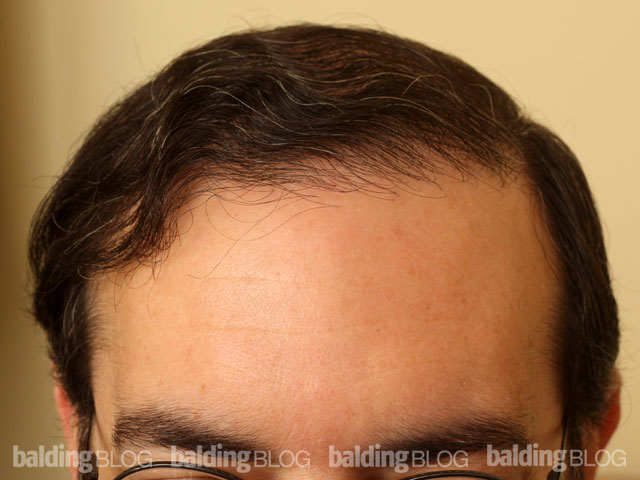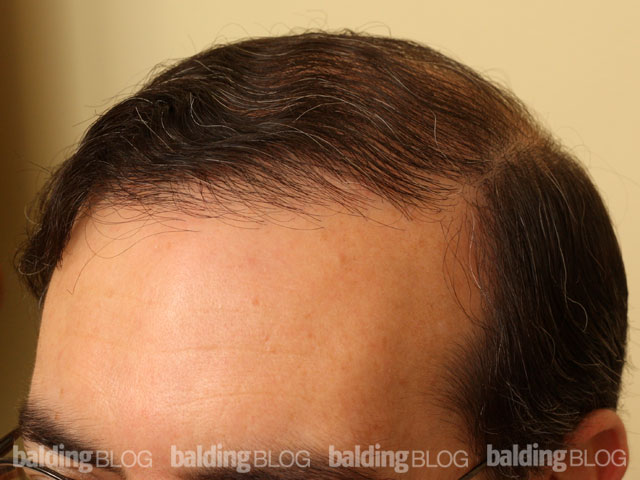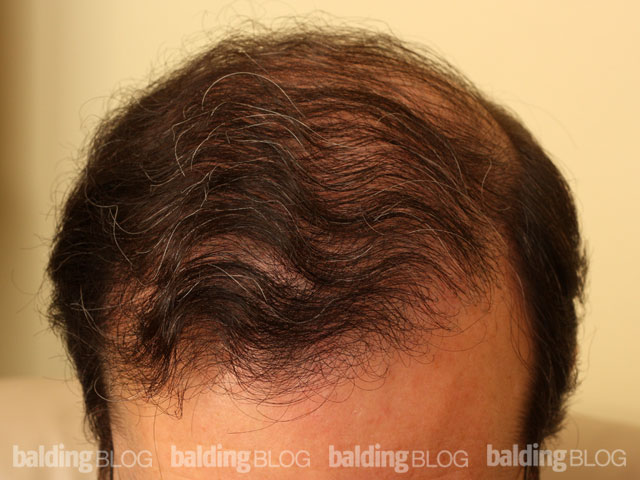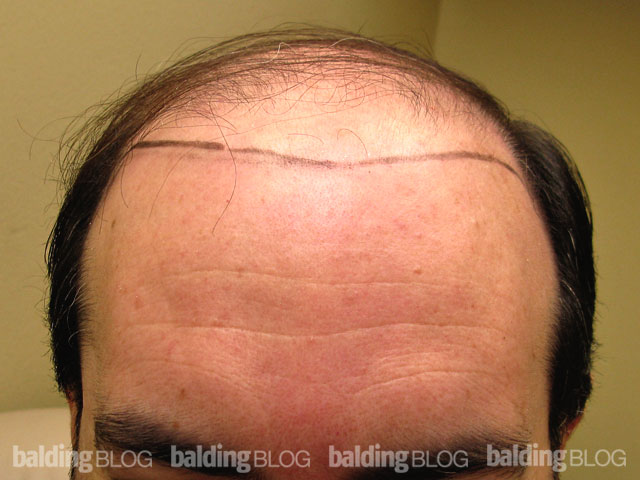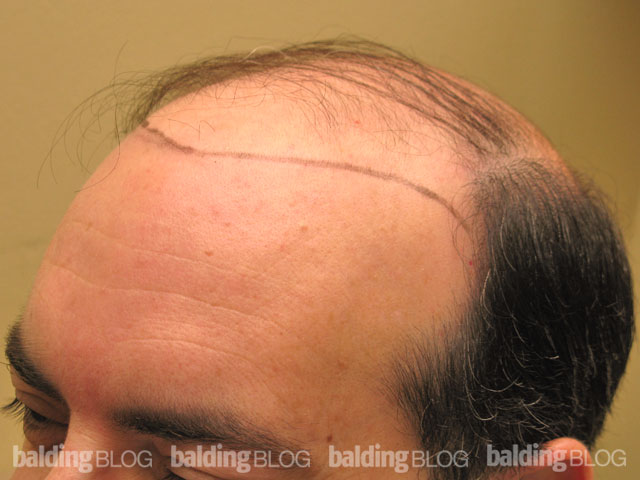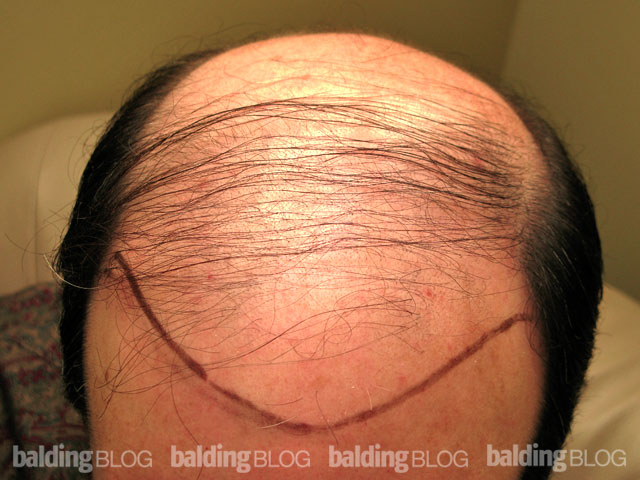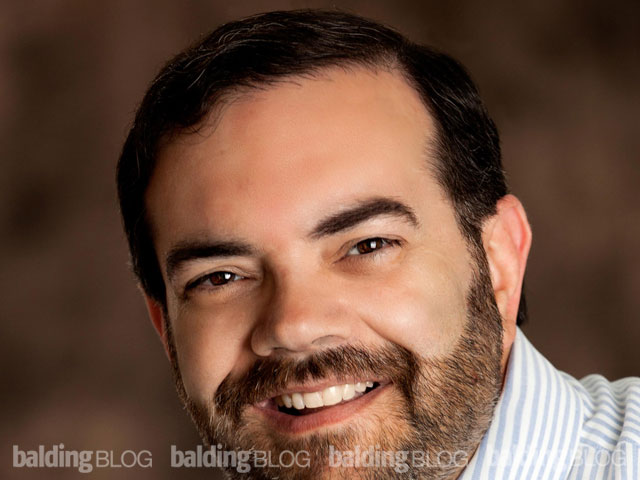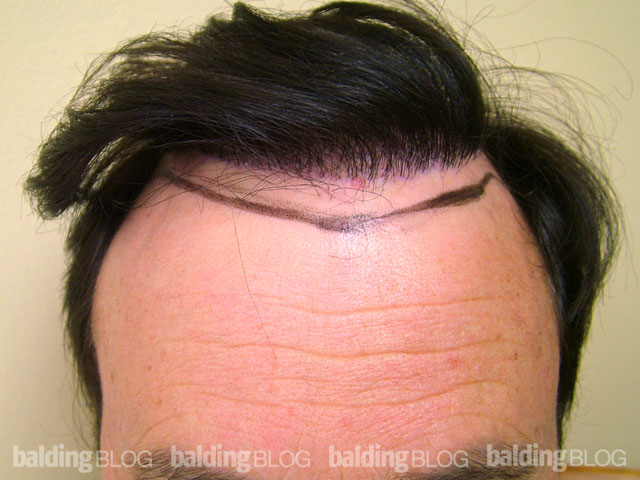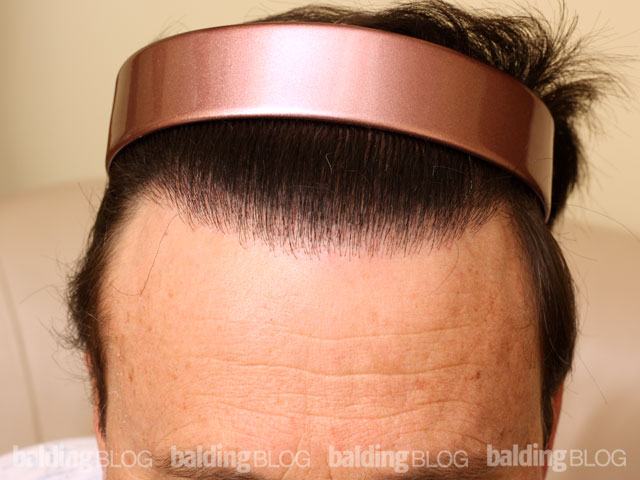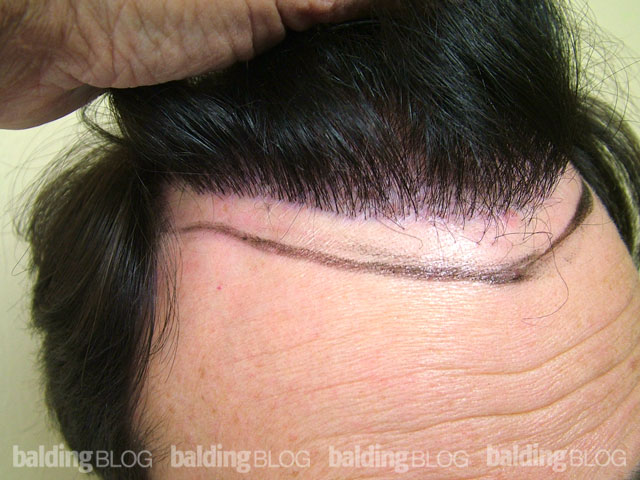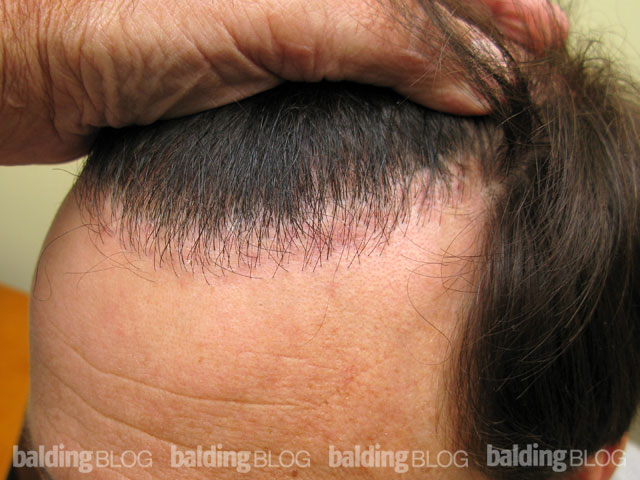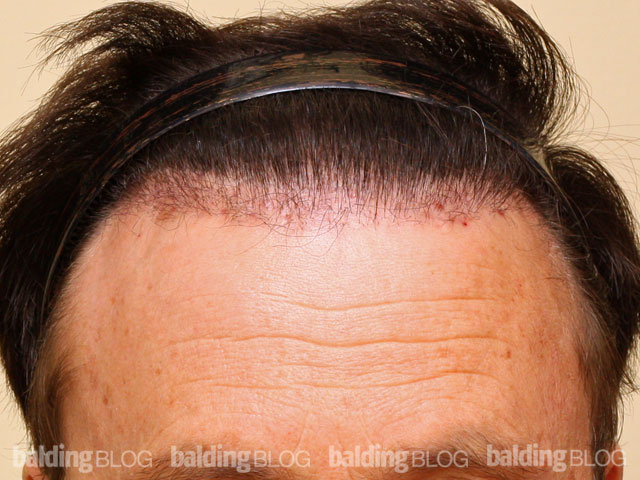The following post is by UK-based physician Dr. Bessam Farjo:
While I have discussed my reservations in previous blogs with regards to younger men undergoing hair transplant surgery, I felt that the most effective way to raise my concerns is by offering examples of cases I’ve dealt with in the past.
I’ve been liaising with a patient for several years who first came to me at the age of 19. After a couple of consultations at our practice, we advised him that he should try a course of Finasteride or Propecia before surgery. The patient went away and, after a couple of years, returned to the practice having undergone extensive scalp reduction surgery in Europe.
Scalp reduction surgery is a surgical hair restoration procedure that surgically removes bald scalp and stretches hair-bearing scalp upward and across to replace bald scalp that has been removed. While this is considered an effective treatment for sufferers of hair loss especially in the past, it was not the appropriate surgery option for this patient at the time.
He was 21 when he came back to our practice and had since suffered further hair loss. Once again, we advised he was still too young to undergo more surgery as the full extent of his hair loss was still unknown at such a young age. Against our advice, the patient had a further two hair transplant procedures at another clinic which he was unhappy about. He is now 24 and we’re still in regular contact as his hair loss has severely affected his confidence and self-esteem.
While we’re working with him to try and rectify his situation, it’s imperative that potential patients are educated correctly on the future consequences that may result from premature surgery as well as the, potentially irreversible, damage that can be done.
The second case is a patient who came to the Farjo Medical Centre less than a year ago. At age 25, he was again advised that perhaps he should first consider medication before undergoing surgery. It turns out that he wasn’t happy with our advice and we have since received angry correspondence from the gentleman who informed us that he went ahead with surgery in another country. Interestingly, he says he is very pleased with the result after only 3 months.
While I’m sure his surgery went well, my concerns lie with what the future holds for him and his hairline. At 25 it’s still too early to say how far his hair loss will go, he may need subsequent operations and treatment which, if achievable, will come at a significant cost. There may also be issues with his donor area and whether or not he has enough hair to undergo further procedures in the future.
Taking these two cases into consideration, I do hope those younger people reading this blog see the downfalls in rushing into undergoing surgery at such an early stage. If, like the first patient, you feel that your hair loss is severely affecting your self-esteem, there is comfort in controlling further hair loss first and there are people out there who can help. Visit your local ethical hair loss centre, your GP or family doctor or go online for support forums such as the Hair Transplant Network, Bald Truth, Hairloss Experiences and others.
I really can’t stress enough how important it is for the younger generation who are losing their hair to think about the future and how surgery may affect them in the years to come.
—
Learn more about the author of this article, Dr. Bessam Farjo, on his BaldingBlog profile or at his website.
![]()
![]()



